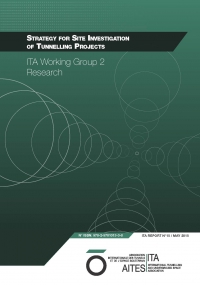This study of site investigation for tunnelling projects began with a request from the Executive Council
Meeting held in Kyoto, Japan on November, 2001 led by Professor Andr. Assis, former President of the
International Tunnelling Association (ITA).
As it is not possible to predefine the ground conditions in detail before a tunnel is constructed geological
risks exist on any tunnelling project. The purpose of site investigation is to provide adequate and reliable
information in early stages of the project in order to improve the knowledge of the subsoil, assess various
design options and choose construction methods that better cope with the identified potential risks.
Site investigations have to be conducted within the global strategy of project risk management (see
“Guidelines for Tunnelling Risk Management “, WG2, 2004) and should follow the ALARP (as low as
reasonably practicable) principle to reduce risks - namely geological, geotechnical and hydrogeological risks.
The level of acceptable risk as defined by the ALARP principle can be specified in different ways depending
on the design stage, and the site investigation strategy should take cognisance of this. The effort required
during a site investigation (in terms of the scope of investigation and related cost) will vary with the project
development, and has to focus on progressively improving the level of knowledge. The effort required at
any stage will depend upon the complexity of the project and will have a direct impact on risk mitigation
and project cost.
This document presents the strategy for site investigations based on international best practice, with the
aim of maximising the benefit in terms of acquiring knowledge at the right project phase, while avoiding
common misleading approaches in terms of investigation effort and responsibility. It is hoped that this
document will be a useful guide for future tunnelling projects.
